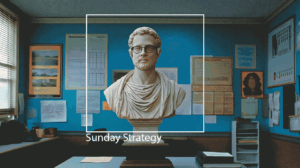Watching the Super Bowl last weekend, a question struck me. Is there such a thing as popular culture anymore? In an age of media fragmentation and personalisation, how do big moments in culture deliver for brands?
Pop culture moments still exist that drive mass awareness and capture our collective attention. This is undeniably true, when we look at moments from the Super Bowl through to AFCON, the Olympics or even political elections. However, where personal perspective once interpreted the same events in different ways individually – technology, media & content is increasingly allowing viewers to experience shared moments in wildly different ways. In an age where content can be customised and served based on interest, the gap between how an event is interpreted is widening.
For marketers, this shift creates the question – “are we confusing mass culture with mass awareness”? Is what we call popular culture, increasingly a network of subcultures each perceiving the same thing in different ways?
It certainly seems so, and forces like platform fragmentation and empowered fandom look to further carve up what we call pop culture.
Platforms Fragmentation: Watching Together in Different Ways
Arguably, events like the Super Bowl highlight how platform fragmentation is increasingly making it possible to experience the same event in completely different ways. Nielsen estimates the US Super Bowl broadcast attracted 123.7m viewers. 120m were estimated to watch it on CBS alone, making it the largest recorded single network event audience. Additionally, 2.3m watched the Spanish broadcast on Univision and 1.2m watched the children focused broadcast on Nickelodeon.
While these alternate feeds are much smaller than the main CBS feed, they’re growing. Nickelodeon reported 190k viewers last year, increasing an audience by nearly 10x that saw Spongebob Squarepants and Patrick call a game with augmented graphics and slime. Each of these feeds also featured different advertising, creating a wildly different holistic experience.
Beyond the feeds, the game split between linear TV and streaming platforms, with 59% estimated to watch on linear TV and others using a wide array of platforms from YouTube TV to NFL+ and Paramount+. While they currently carry the same game, new perspectives and views (as seen in the NCAA national championship game’s offer of everything from tactical cameras to hometown radio announcers) are currently available through streaming. These look to only increase in coming years, making it likely that the same event feed can be enjoyed in increasingly different ways based on taste. At a certain point, does the variety in experience create a completely distinct moment for different audiences?
Empowered Fandoms: Different Value from the Same Event
While the majority of Super Bowl fans still watched the game on the same platform in the same way, we know people did so for different reasons. The classic statement of ‘only watching it for the ads‘ isn’t new, but it does highlight how large pop culture events are a buffet of moments and content viewers select into.

The increasing power of fandom in shaping selective experience is clearly shown by Taylor Swift’s effect on the NFL and the game. Her relationship with Travis Kelce has increased interest in the Kansas City Chiefs all season, but Super Bowl viewership benefitted from the interest around her relationship. Overall 18-24 viewership increased by 22%, according to Sports Media Watch, and 18-24 female viewers increased by 24%. Seemingly, growth for this year’s Super Bowl came from a new aspect being added to the game to attract new viewers, instead of the core product changing. Years of conversation about how the NFL needs to pivot in culture was instead helped by grafting something completely new onto it.
The impact of bringing ‘Swifties’ into the NFL, highlights the impact of multiple sub-groups or fandoms coming together in the same event. Taylor Swift’s supporters are a highly organized and motivated group, partially due to the ecosystem built around them of music, events, culture and lore. However, both Swifties and less defined groups most benefit from how social media platforms such as TikTok have powered discovery and association with different groups.
The content algorithm allows users to quickly find others within subgroups or fandoms, organize and share content aligned to their values – each acting as a content incubator that sometimes explodes out into wider culture. Events like the Super Bowl increasingly serve as content inspiration for these groups to interpret the occasion along their own point of view. Pre-game Super Bowl content looked very different between NFL fans and Swift fans, as Swifties discussed whether Swift would land in time from an eras concert in Japan.
For Marketers, It’s Mass Awareness and Sub-Cultural Relevance
For marketers, there is a needed shift in thinking about culture and brands. The age of top-down cultural relevance has long been declining – arguably since events such as the UK getting more than 5 TV channelsor the rise of social media. Whereas a singular asset or idea could be deployed at scale to ‘play in culture’ before and means something, marketing now requires more support around it.
The deployment of wide reaching and distinctive brand assets that drive mass awareness is the beginning, not the end of an effective activity. These assets increasingly need to then have relevance conferred to them within different groups through additional messaging. Driving awareness with a Super Bowl ad is just that – relevance has to come in more nuanced ways supporting it.
Association with wide reaching cultural events is an opportunity to provide brand stimulus that different groups take in different ways. The rise of Super Bowl ads featuring a portfolio of influencers or cultural easter eggs is just one creative response to acknowledging the heterogeneity of the audience.
The before and after of a cultural moment also increases in importance for marketers as it functions more as a meeting place of different groups, vs a monolithic event. Targeted social content, influencer partnerships and other activity around a moment can drive relevance that combines with broader brush activity . When planned correctly, it condenses in a key moment of attention before exploding back out again as different groups consume, discuss and create based on what they decided to take from the moment.
Flexible Ideas Bridge a Sub-Culture Gap
Much of what has been written here doesn’t seem new or provocative to many. However in practice, we have to think about how a successful brand operates to leverage it. Successful brands and campaigns now require flexibility, to stretch from wide reaching distinctive assets through to focused relevance driving activity – making an idea widely known, but also specifically resonate.
Ideas with depth allow different groups to experience different aspects of a campaign and event, while still enabling shallow participation with a key asset. CeraVe’s Michael Cera Super Bowl ad is a great example of something that was widely known through its 30 second execution in game, but supported by PR and social media in the weeks before. If you weren’t in the group of people that saw social content such as the unexpected purchase and distribution of CeraVe products from a pharmacy in Williamsburg, you could still enjoy the top line story.
If you’re not from or familiar with Boston, Ben Affleck’s ‘Dunkin’ commercial is still enjoyable, but the detail in execution and in supporting assets resonates further to Dunkin’s heartland and Bostonians. For example, his comment that J-Lo was ‘Blinded by the Pinstripes’ only makes sense to Red Sox and Yankees Fans, as well as those deeply familiar with her dating history.
Even when creating their own moments, brands are increasingly having to flex across culture vs. sitting in pop culture. Barbie’s movie launch last year was described by the brand as aiming to be ‘the world’s largest playdate’, but what that thought means, and what the product behind it represented, changed across a multitude of content, audiences and over 160 partnerships. Even in its interaction with Oppenheimer, the brand’s core idea could flex across groups in culture, but also into other properties. It simultaneously resonated with Christopher Nolan fans and Barbie loyalists for different reasons, while having many shared recognisable elements.
While it may seem obvious in an age of integrated marketing to build a flexible brand and campaign, its easier said than done. Often we’re hamstrung by budgets and time. Capturing attention alone today is hard, let alone creating something that resonates beyond one group.
However, the need to push through a good idea, to a flexible one, is something that recognises that what is culturally engaging is changing and expanding. Popular culture may not exist as one thing anymore, but paradoxically it is all around us if we can build something flexible enough to catch it.



